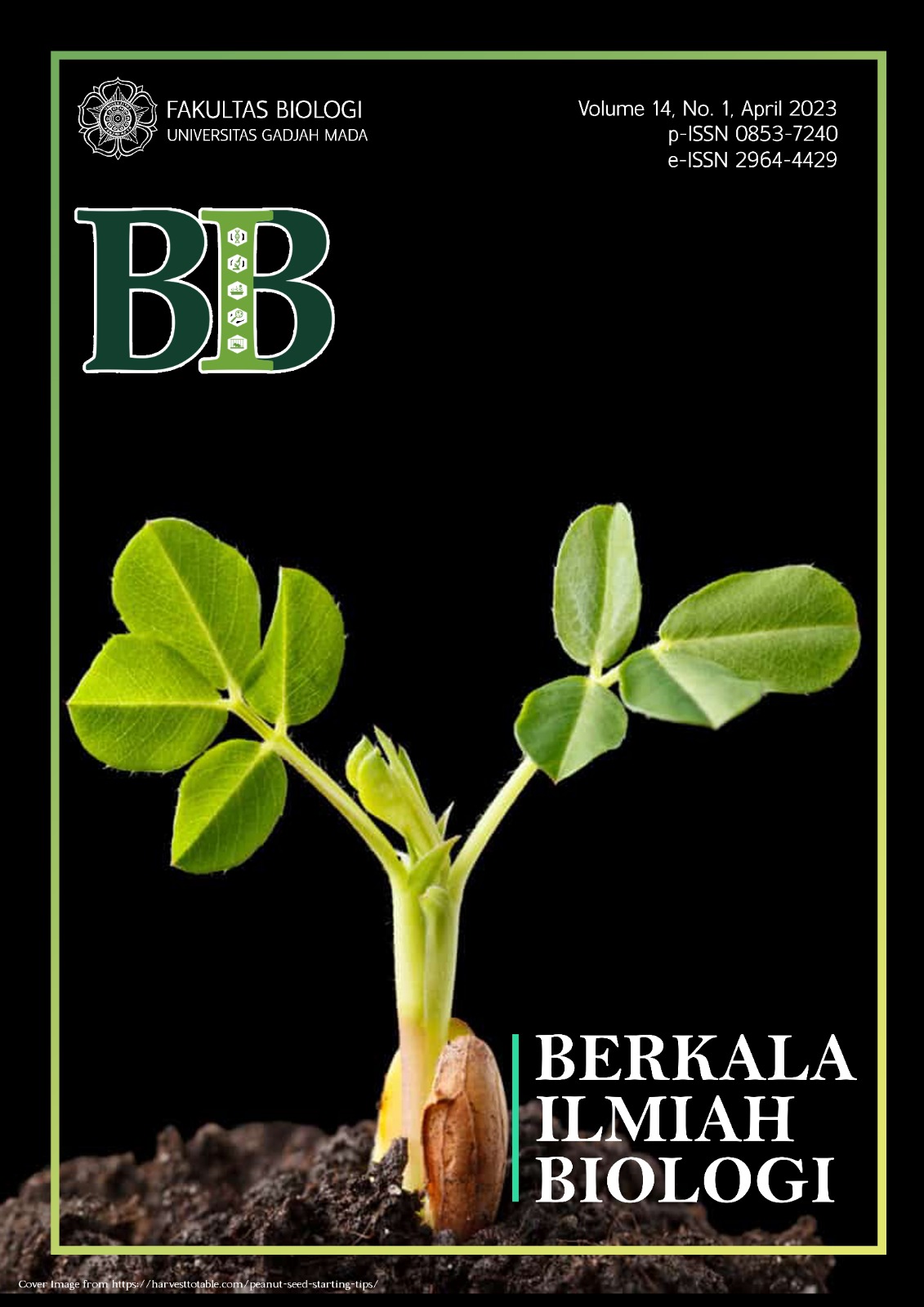Effectivity of Entomopathogen Fungus Metarhizium anisopliae (Metchnikoff) Sorokin to Mortality of Aedes aegypti Linnaeus, 1762 Larvae
Isi Artikel Utama
Abstrak
The Aedes aegypti mosquito is the vector that causes the spread of the Dengue virus that causes Dengue Hemorrhagic Fever. Breaking the chain of spread of Dengue fever has been done a lot, but it can cause negative impacts to environment. It is necessary to use other alternative solutions. One of them uses natural bioinsecticides from entomopathogenic fungi. The entomopathogenic fungus that has been widely developed as a bioinsecticide is Metarhizium anisopliae. Metarhizium anisopliae is a fungus which has larvicidal activity. Isolates of Metarhizium anisopliae were obtained from the Center for Forecasting Plant Pest Organisms, Karawang, West Java and Aedes aegypti larvae were obtained from Parasitology Laboratory, Faculty of Medicine, Public Health, and Nursing, UGM. The research was conducted from November 2021-April 2022 at the Entomology Laboratory, Faculty of Biology and the Parasitology Laboratory, Faculty of Medicine, Public Health, and Nursing, UGM, Yogyakarta. The method in this research is the culture and manufacture of a suspension of the fungus Metarhizium anisopliae with an average conidia density 0,9 x 107, 0,57 x 106, 1,175 x 105, 5,25 x 104, 3 x 104, 12,5 x 103 of conidia/mL, rearing of Aedes aegypti, bioassay, and data analysis using Probit Test with SPSS software version 23 to determine LC50. The effective concentration to kill 50% of larvae was 0.9 x 107 conidia/ml. There was no significant effect between each different concentration in killing Aedes aegypti larvae. The LC50 value obtained was 1.4 x 107. Metarhizium anisopliae was effectively to control Aedes aegypti larvae.
Rincian Artikel

This work is licensed under a Creative Commons Attribution 4.0 International License.


